Alexander J. Edwards
Neuromorphic Hebbian learning with magnetic tunnel junction synapses
Aug 21, 2023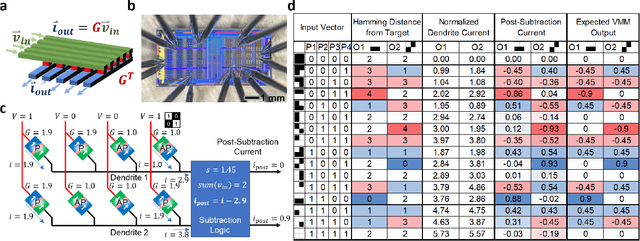
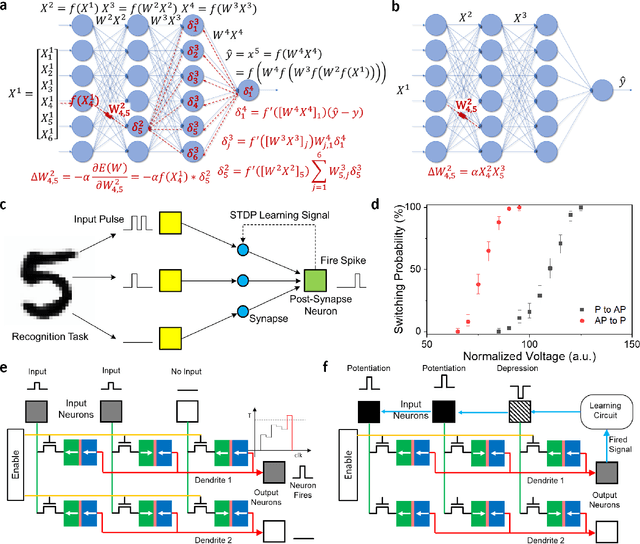
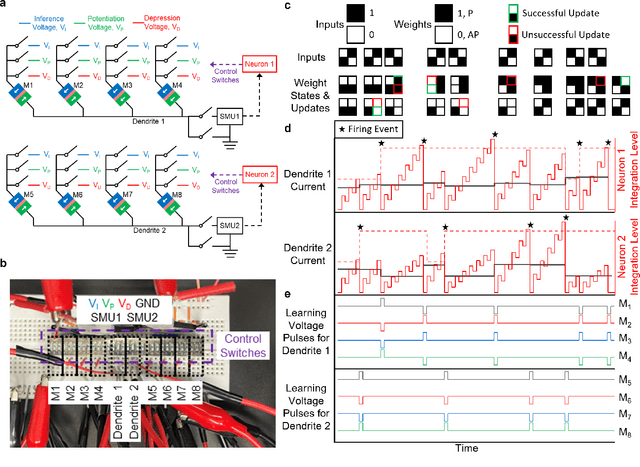
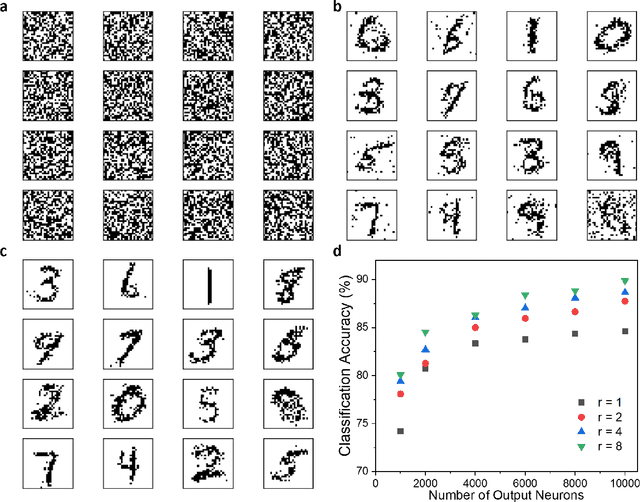
Abstract:Neuromorphic computing aims to mimic both the function and structure of biological neural networks to provide artificial intelligence with extreme efficiency. Conventional approaches store synaptic weights in non-volatile memory devices with analog resistance states, permitting in-memory computation of neural network operations while avoiding the costs associated with transferring synaptic weights from a memory array. However, the use of analog resistance states for storing weights in neuromorphic systems is impeded by stochastic writing, weights drifting over time through stochastic processes, and limited endurance that reduces the precision of synapse weights. Here we propose and experimentally demonstrate neuromorphic networks that provide high-accuracy inference thanks to the binary resistance states of magnetic tunnel junctions (MTJs), while leveraging the analog nature of their stochastic spin-transfer torque (STT) switching for unsupervised Hebbian learning. We performed the first experimental demonstration of a neuromorphic network directly implemented with MTJ synapses, for both inference and spike-timing-dependent plasticity learning. We also demonstrated through simulation that the proposed system for unsupervised Hebbian learning with stochastic STT-MTJ synapses can achieve competitive accuracies for MNIST handwritten digit recognition. By appropriately applying neuromorphic principles through hardware-aware design, the proposed STT-MTJ neuromorphic learning networks provide a pathway toward artificial intelligence hardware that learns autonomously with extreme efficiency.
Experimental Demonstration of Neuromorphic Network with STT MTJ Synapses
Dec 09, 2021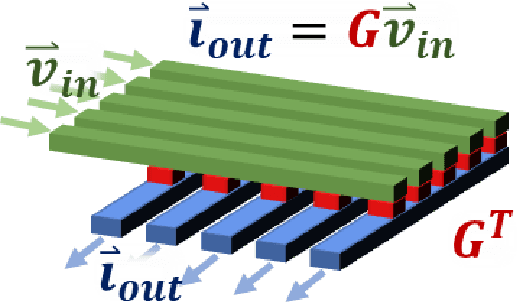
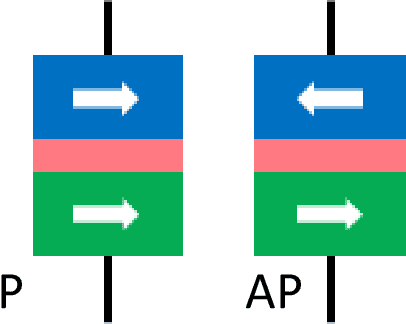
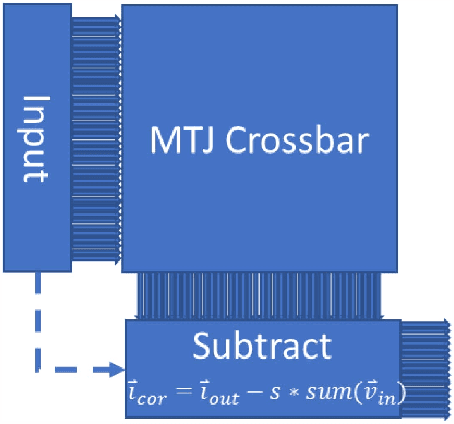
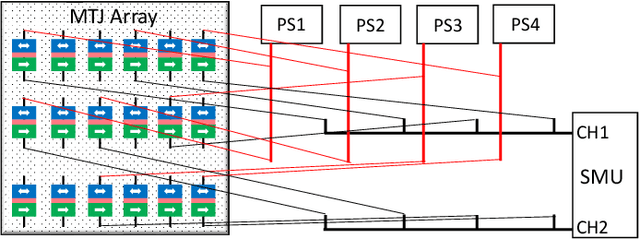
Abstract:We present the first experimental demonstration of a neuromorphic network with magnetic tunnel junction (MTJ) synapses, which performs image recognition via vector-matrix multiplication. We also simulate a large MTJ network performing MNIST handwritten digit recognition, demonstrating that MTJ crossbars can match memristor accuracy while providing increased precision, stability, and endurance.
Analog Seizure Detection for Implanted Responsive Neurostimulation
Jun 11, 2021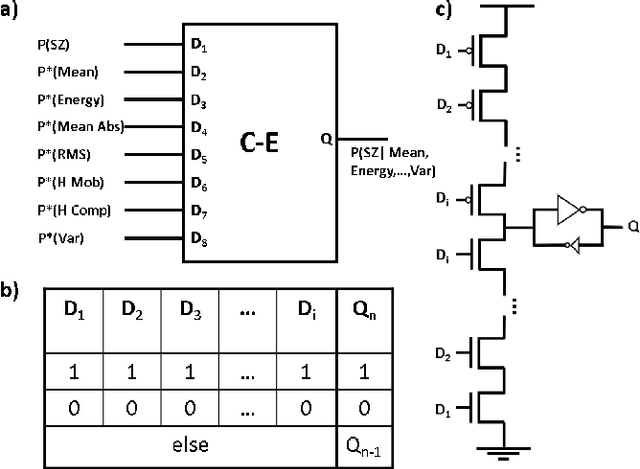
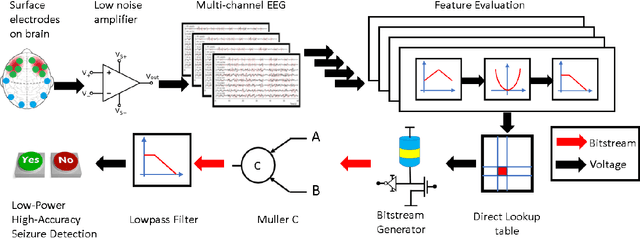
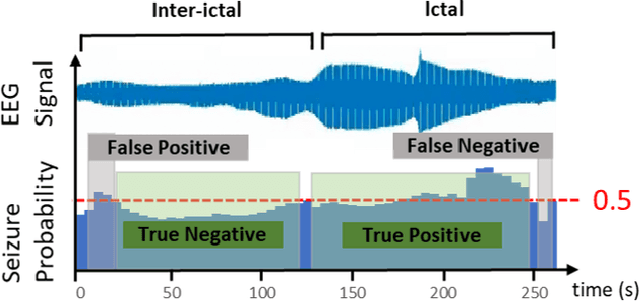
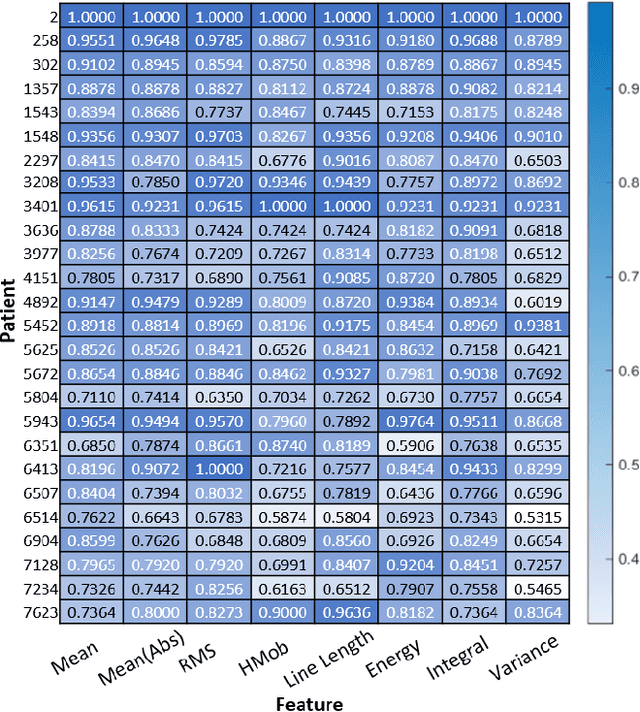
Abstract:Epilepsy can be treated with medication, however, $30\%$ of epileptic patients are still drug resistive. Devices like responsive neurostimluation systems are implanted in select patients who may not be amenable to surgical resection. However, state-of-the-art devices suffer from low accuracy and high sensitivity. We propose a novel patient-specific seizure detection system based on na\"ive Bayesian inference using M\"uller C-elements. The system improves upon the current leading neurostimulation device, NeuroPace's RNS by implementing analog signal processing for feature extraction, minimizing the power consumption compared to the digital counterpart. Preliminary simulations were performed in MATLAB, demonstrating that through integrating multiple channels and features, up to $98\%$ detection accuracy for individual patients can be achieved. Similarly, power calculations were performed, demonstrating that the system uses $6.5 \mu W$ per channel, which when compared to the state-of-the-art NeuroPace system would increase battery life by up to $50 \%$.
Frustrated Arrays of Nanomagnets for Efficient Reservoir Computing
Mar 16, 2021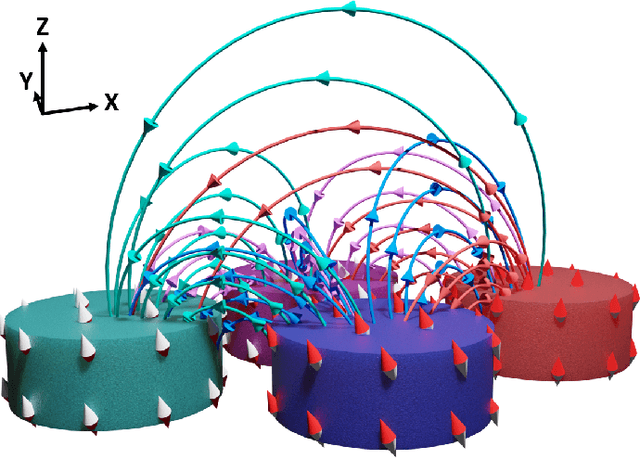


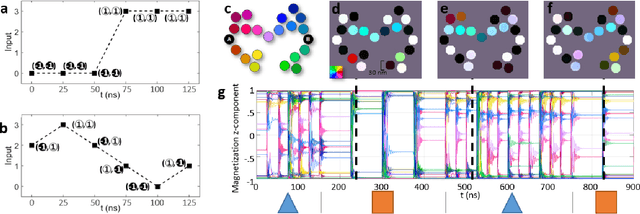
Abstract:We simulated our nanomagnet reservoir computer (NMRC) design on benchmark tasks, demonstrating NMRC's high memory content and expressibility. In support of the feasibility of this method, we fabricated a frustrated nanomagnet reservoir layer. Using this structure, we describe a low-power, low-area system with an area-energy-delay product $10^7$ lower than conventional RC systems, that is therefore promising for size, weight, and power (SWaP) constrained applications.
Reservoir Computing with Planar Nanomagnet Arrays
Mar 24, 2020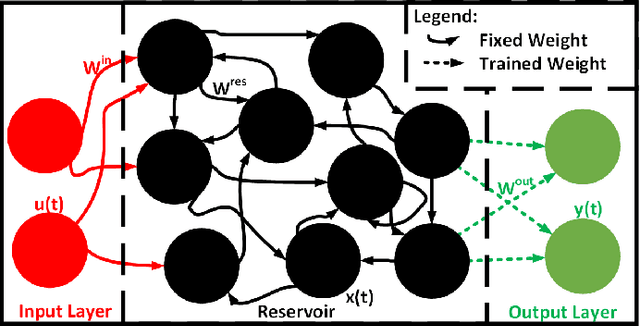
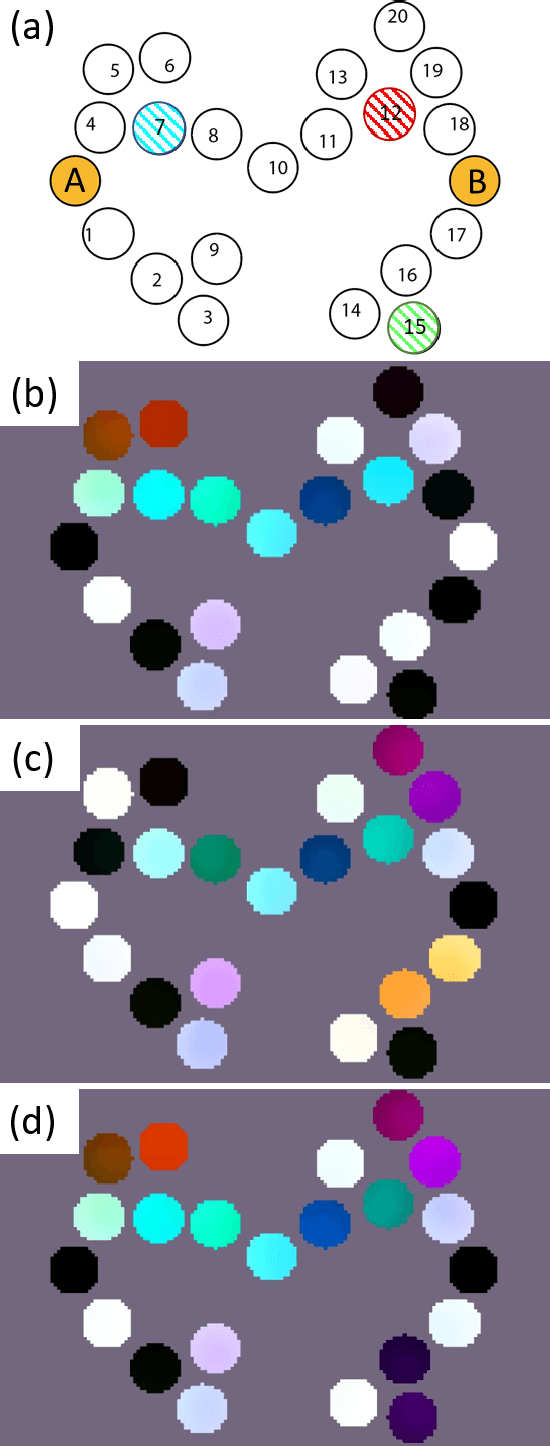
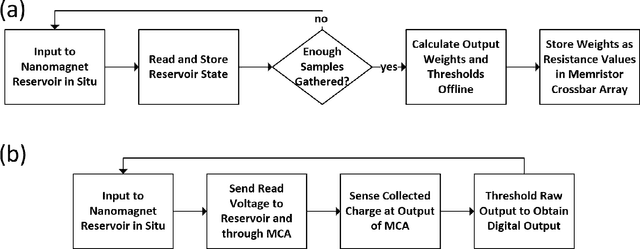
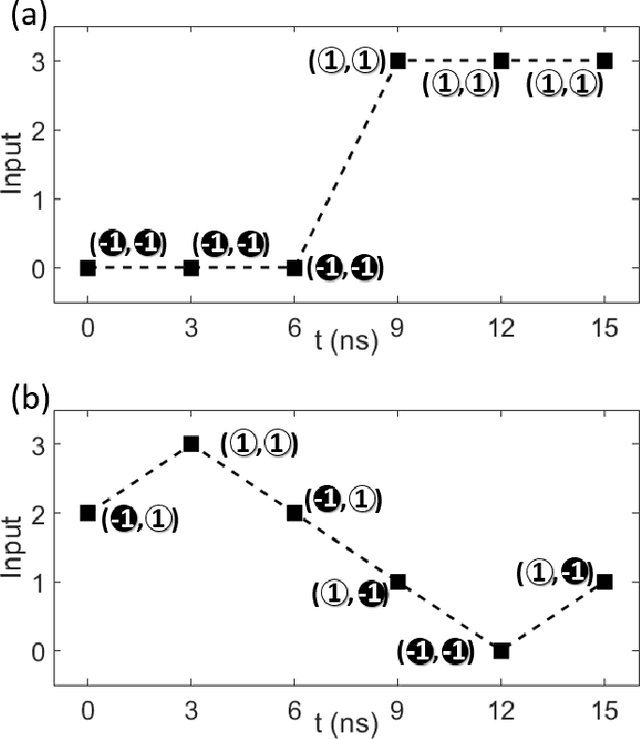
Abstract:Reservoir computing is an emerging methodology for neuromorphic computing that is especially well-suited for hardware implementations in size, weight, and power (SWaP) constrained environments. This work proposes a novel hardware implementation of a reservoir computer using a planar nanomagnet array. A small nanomagnet reservoir is demonstrated via micromagnetic simulations to be able to identify simple waveforms with 100% accuracy. Planar nanomagnet reservoirs are a promising new solution to the growing need for dedicated neuromorphic hardware.
 Add to Chrome
Add to Chrome Add to Firefox
Add to Firefox Add to Edge
Add to Edge